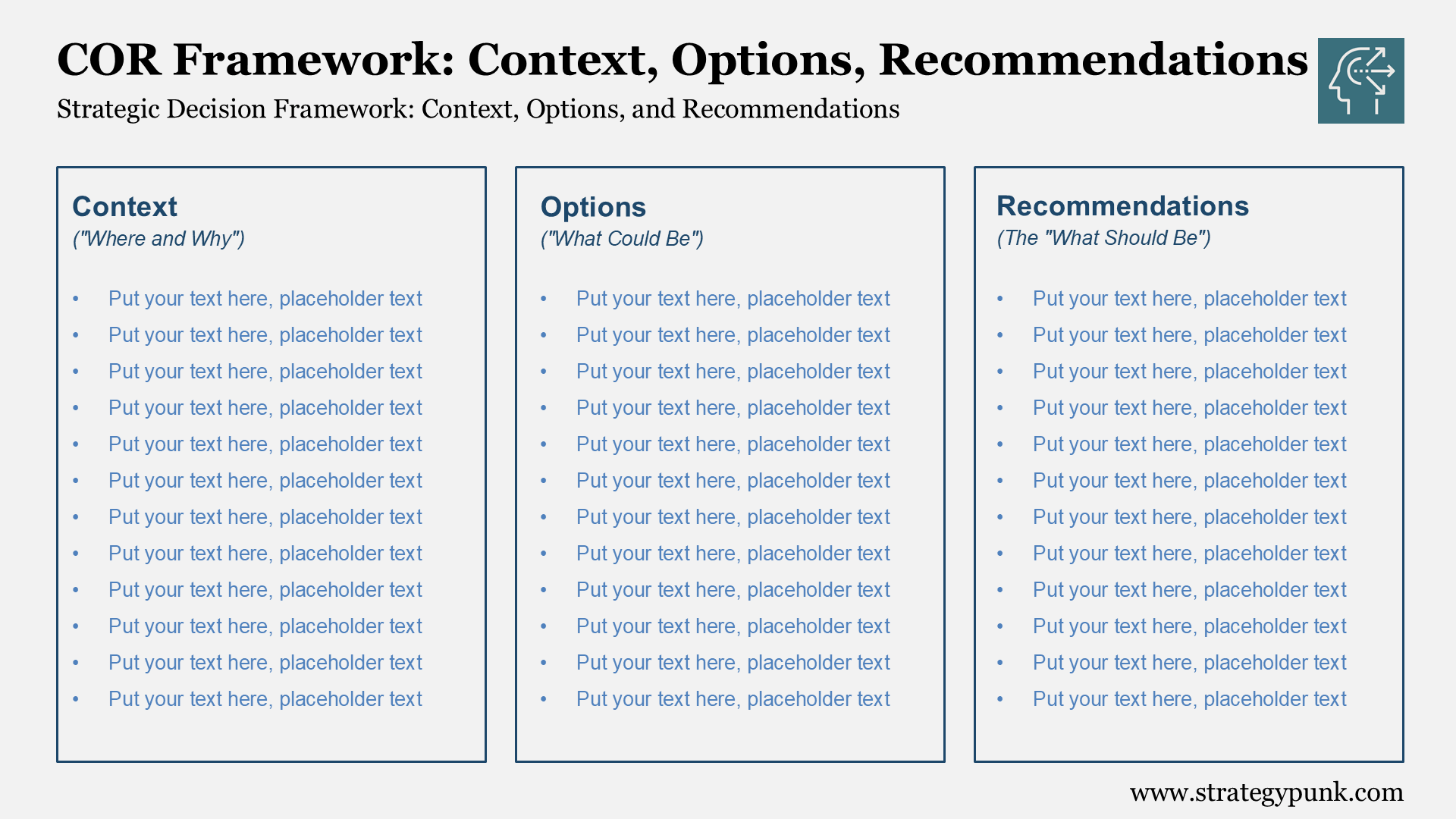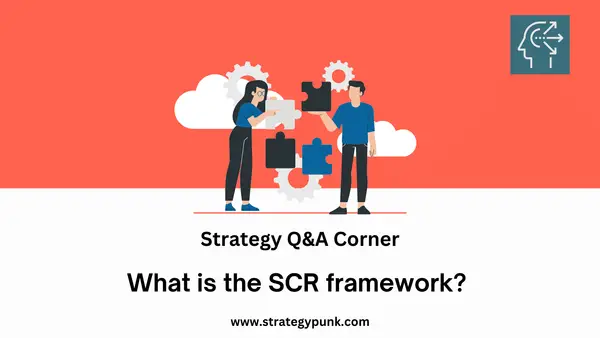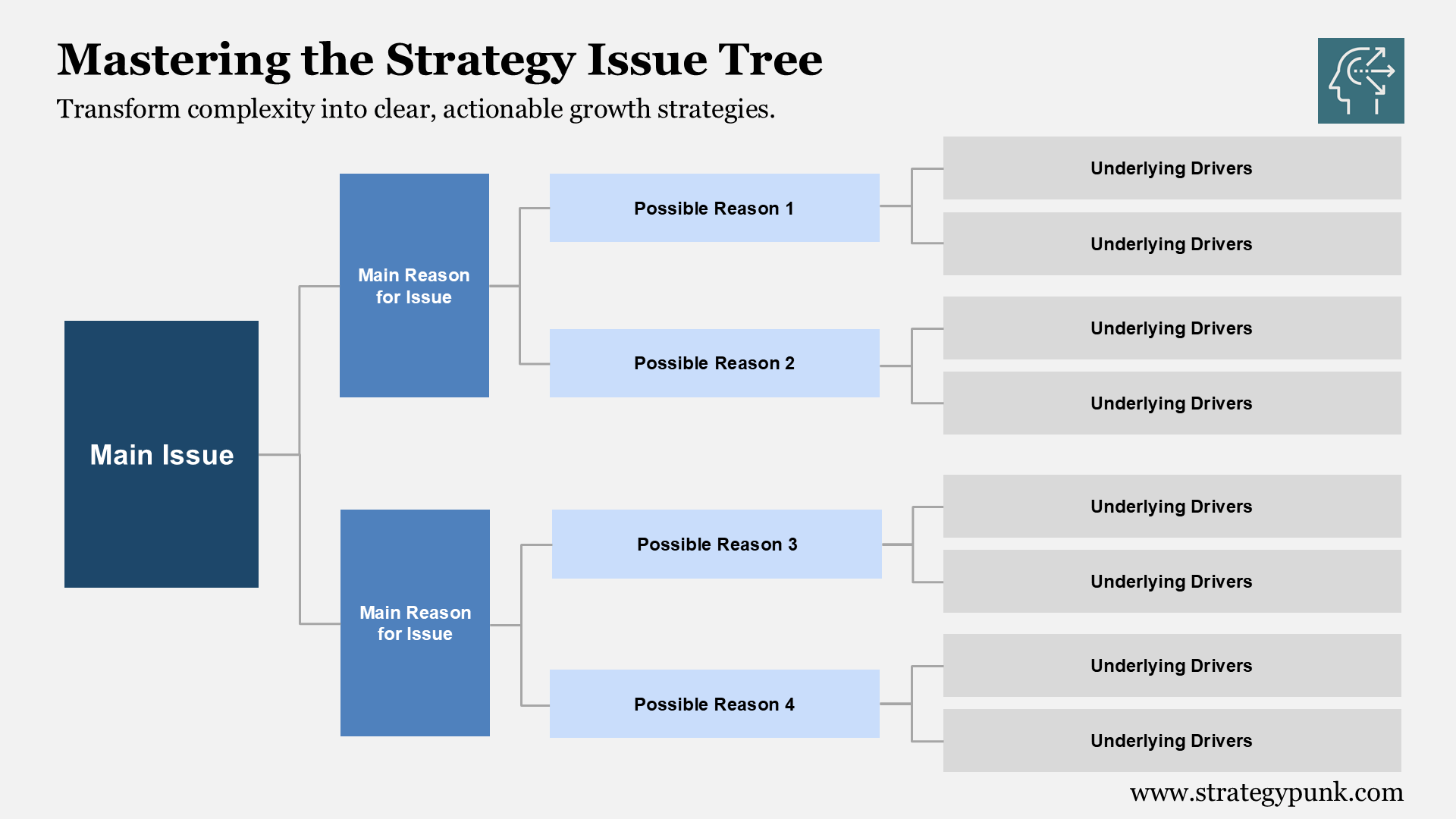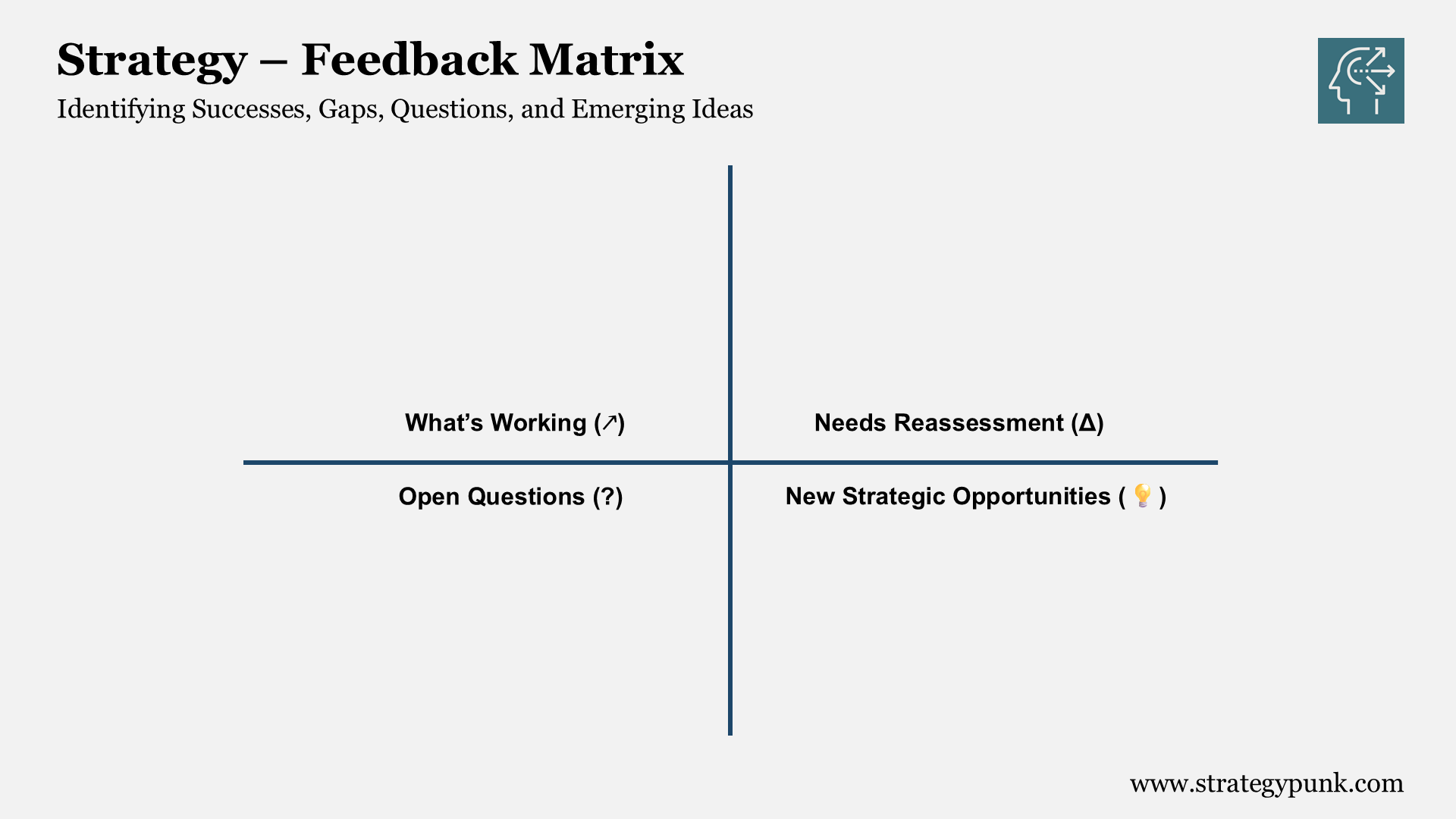Ohmae's 3Cs Model Template: Mastering Customer, Competitor, and Corporation
Unlock success with Ohmae's 3Cs Model - a masterclass in understanding Customers, Competitors, and your Corporation. Ready to level up? Download the free Ohmae's 3Cs Model PDF and PowerPoint template.
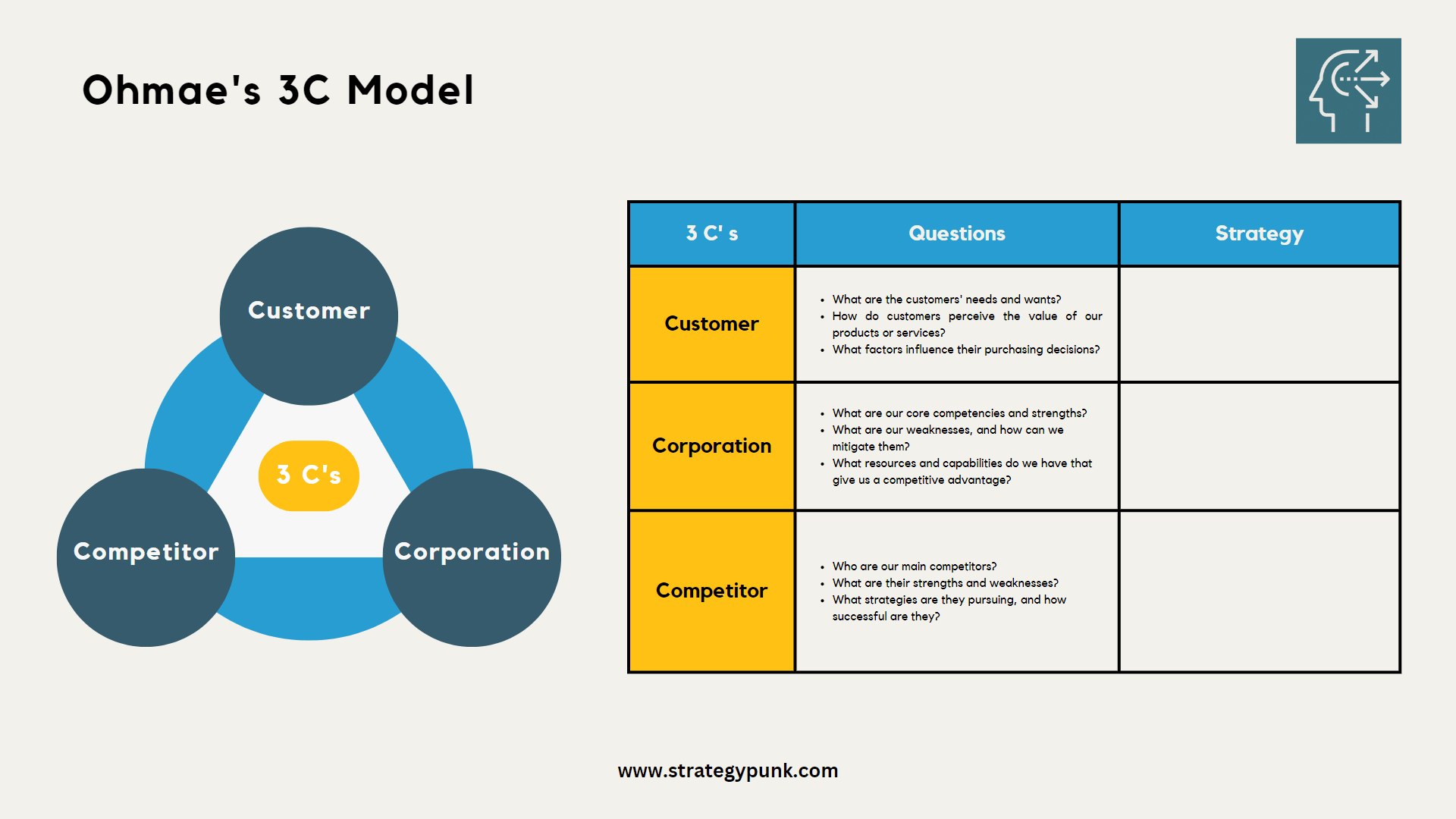
Introduction
Imagine you're in a boxing ring, where each punch, dodge, and stance matters in deciding your victory.
But what if you had a tool to predict your opponent's moves, understand your strengths, and cater to the crowd's preferences?
Welcome to Ohmae's 3Cs Model - a proven business strategy guide akin to your ringside coach.
Diving into the corporate battleground can often feel overwhelming, and that's precisely where Kenichi Ohmae's 3C model—representing Customers, Competitors, and Corporations—comes to the rescue.
It's like a cheat sheet, helping you decode your industry's intricate dynamics to formulate winning strategies.
As you harness the power of this model, you'll navigate the often turbulent waters of business planning with the skill of an experienced sailor, turning potential pitfalls into lucrative opportunities.
Let's unveil the mystery of this invaluable tool and prepare to be the champion in your business arena.
Overview of Ohmae's 3C Model
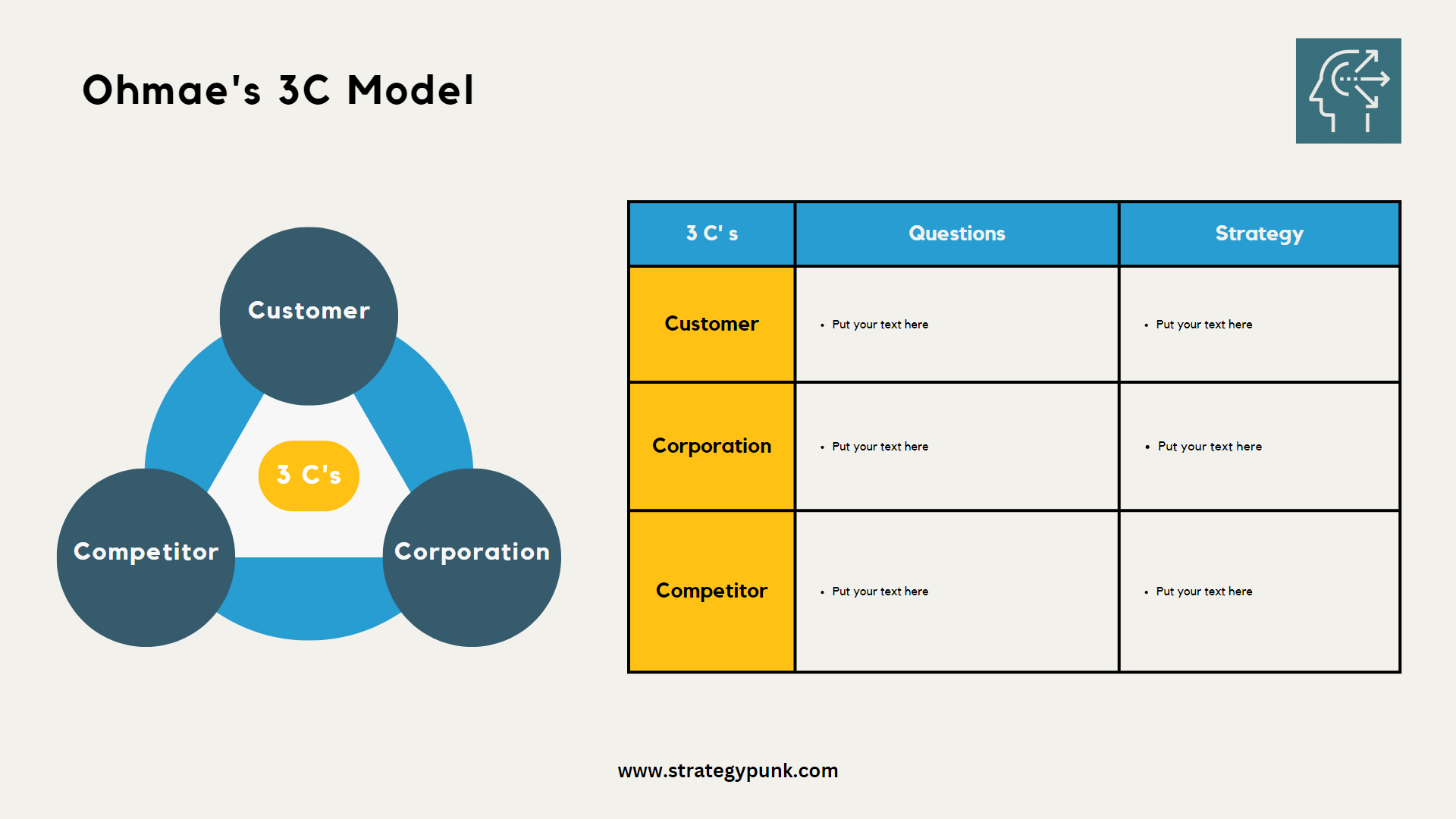
Customers
In Ohmae's 3C model, you should focus on understanding your customers' needs, preferences, and behaviors. This means:
- Identifying your target market
- Researching their buying habits
- Addressing their pain points
- Offering tailored products/services
Good customer relations = more satisfied clients = increased sales!
Corporation
Next, could you assess your company's strengths and weaknesses? In this section, your focus should be:
- Analyzing internal operations
- Identifying areas for improvement
- Enhancing core competencies
- Leveraging unique selling points (USPs)
Remember, a solid foundation leads to a successful business!
Competitors
Lastly, keep an eye on your competition. Understand what they are doing and learn from it. It's essential to:
- Analyze their marketing tactics
- Uncover their USPs
- Learn from their mistakes
Stay ahead of the competition in a constantly evolving market!
By focusing on these critical components, you can effectively apply Ohmae's 3C model to achieve business success.
Application of the 3C Model
Benefits of Strategic Planning
Ohmae's 3C model helps you create effective strategies by focusing on the three core factors of success: customers, competition, and your company. By using the 3C model, you can:
- Identify key customer segments.
- Evaluate competitors and their offerings.
- Analyze your company's strengths and weaknesses.
This way, you will likely create more successful strategies for your business.
Industry Examples
Here are a few examples of how you can apply the 3C model in different industries:
- Retail: To attract customers, you must understand their preferences and behavior. Study your competition and identify gaps in their offerings. Set your business apart by focusing on your strengths and addressing weaknesses.
- Technology: Focus on your target market and its problems. You can assess your competition and determine your unique selling proposition (USP), highlighting your product's strengths. Please always make sure your company stays ahead through innovation.
- Hospitality: Could you describe the guests you want to cater to and understand their needs? Monitor your competitors and capitalize on their weaknesses. Ensure your employees provide top-notch service while maximizing your hotel's potential.
Remember, using the 3C model in your industry will help you create tailored strategies to reach your goals. To succeed, prioritize your customers, competition, and company.
Limitations and Criticisms
Ohmae's 3C model is a popular framework in business strategy. However, it's essential to be aware of its limitations and criticisms.
Firstly, the 3C model could be more complex. While it captures the essence of business strategy, it might need to delve deeper to account for complex market dynamics. The model only reveals some aspects of your market, limiting its utility.
Another criticism is the need for more focus on external factors. The 3C model concentrates primarily on customers, competitors, and companies but doesn't consider outside influences. These external factors—such as economic conditions, regulations, and societal trends—can significantly impact a business, and ignoring them could result in strategic blind spots.
Additionally, the 3C model is static. In today's fast-paced business environment, you must be agile and continuously adapt your strategy based on new information. Ohmae's 3C model does not inherently provide a mechanism for this kind of adaptive thinking.
Finally, the model may only apply to some businesses or industries. For instance, non-profit organizations or companies with unconventional business structures might need help to use the 3C model effectively. Moreover, the model may be less helpful in industries experiencing rapid technological changes, where traditional competitors and customer segmentation may become irrelevant.
Conclusion
Ohmae's 3C model is a strategic business tool that helps you to analyze three key factors: Customer, Competitor, and Company. Utilizing this model, you can assess your organization's strengths and weaknesses and identify opportunities for growth and improvement.
When applying the 3C model, you first examine the customer segment. In this analysis, you determine what drives customer demand and preferences, catering your strategies accordingly. Next, you evaluate the competitor landscape to understand what differentiates your business from others in the market. This will help you to develop strategies to stand out.
Lastly, you take an in-depth look at your own company. This analysis covers the organization's capabilities, resources, and strategies alongside its product and service offerings. By understanding all these elements, you can align your organization with customer needs and build a competitive edge.
Applying Ohmae's 3C model gives you the necessary insights to compete in today's fast-paced business world. By thoroughly analyzing the three critical components—customer, Competitor, and Company—you can ensure your organization is well-positioned to meet market demands and capture opportunities.
The 3C model guides your strategic planning and keeps your business agile and innovative. Incorporate this model into your decision-making process to foster growth and sustained success.
Frequently Asked Questions
What are the 3 C's of strategy?
The 3 C's of Ohmae's 3C model stand for Customer, Competitor, and Company. According to Ohmae, understanding and analyzing these three crucial factors is essential for designing successful business strategies.
How is the 3C model used in marketing?
In marketing, the 3C model helps you identify your target customer segment, assess your competitors' strategies, and evaluate your company's strengths and weaknesses. By considering these factors, you can develop more effective marketing campaigns and make better-informed decisions about product positioning and promotion.
3C model's impact on pricing?
The 3C analysis influences pricing decisions, and the model helps you weigh customers' preferences, competitors' pricing strategies, and your company's operating costs. By understanding these elements, you can determine an optimal price point that satisfies your customers and reflects your brand value.
Real-life examples of 3C analysis?
An example of using the 3C model could be a new smartphone being launched. The marketer needs to understand the target customers (their needs and preferences), analyze competitors (pricing, features, and market share), and evaluate the company (strengths, weaknesses, and production costs) to create an effective marketing plan and pricing strategy.
What are the differences between 3C and other strategies?
While the 3C model focuses on the three main factors of customers, competitors, and your company, other strategies might emphasize more specific aspects. For example, Porter's Five Forces analysis concentrates on competitive dynamics, while the SWOT analysis assesses internal strengths and weaknesses and external opportunities and threats. While each strategic model offers its unique perspective, the 3C model provides a solid foundation for understanding your business environment.
Ohmae's 3C Model Template
Ohmae's 3C Model is a strategic framework that helps businesses analyze and improve performance. It focuses on three key components: Customer, Competitor, and Company. By understanding and balancing these elements, you can create a winning strategy for your business.
The Customer aspect of the model examines your target market and their needs. 💡 Consider what drives your customers and tailor your offerings to their preferences.
The Competitor dimension involves analyzing your rivals in the business world. 🏆 See what they're doing and identify their strengths and weaknesses to create a competitive edge.
Lastly, the Company factor examines your internal strengths, weaknesses, opportunities, and threats. 🔧 By evaluating these, you can allocate resources effectively and develop your unique selling proposition.
Expertise in Ohmae's 3C Model is just a download away! 😎 Click on these links to download your FREE PowerPoint and PDF templates:
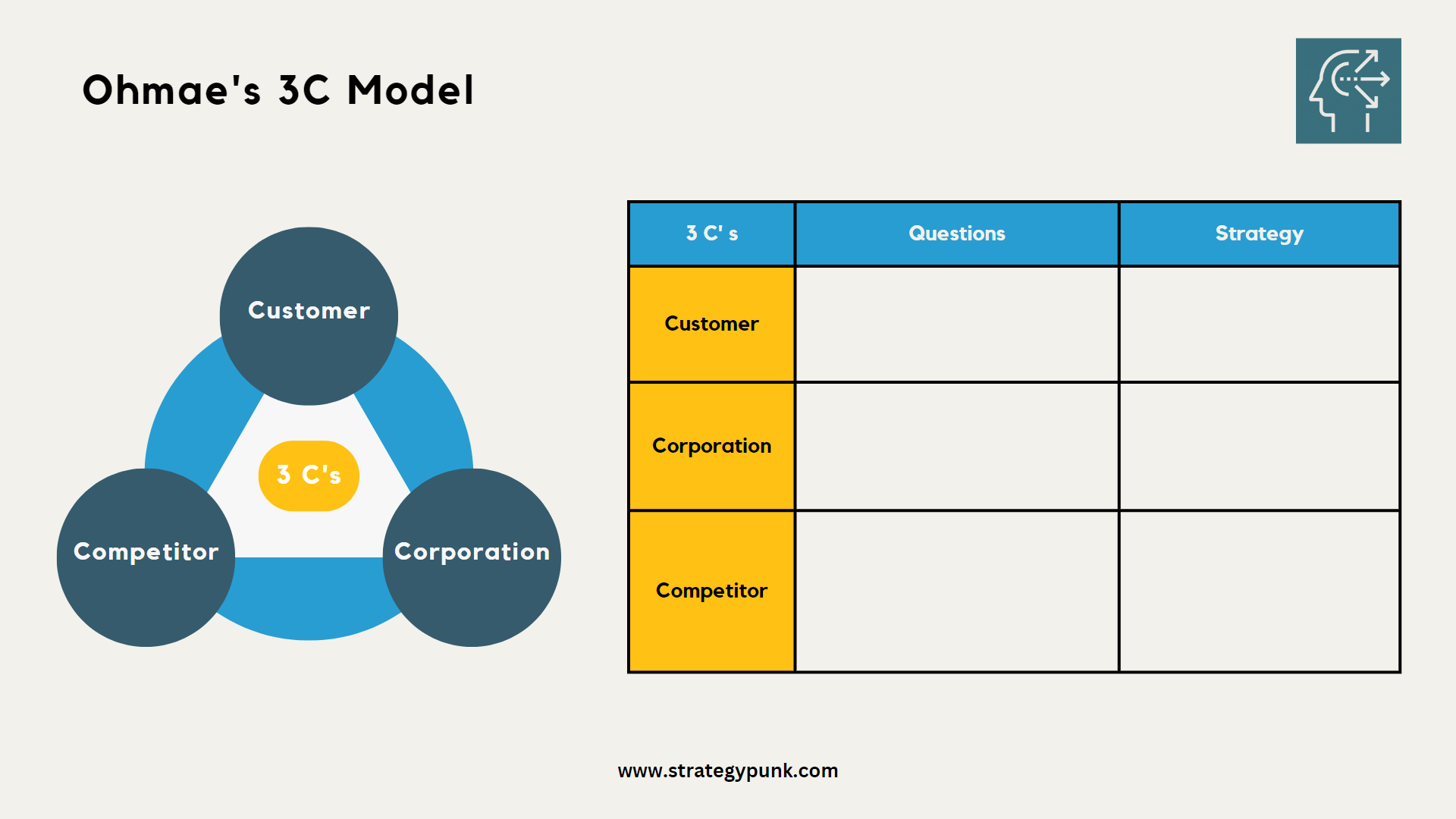
Ohmae's 3C Model PowerPoint Template
Ohmae's 3C Model PDF Template
You're set to execute Ohmae's 3C Model and take your business strategy to the next level! 🚀


